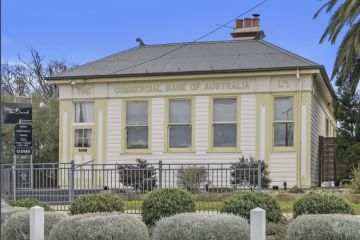Where homeowners are selling property at a loss
Australian homeowners were even more likely to make a profit than usual if they sold their homes in the September quarter, new data shows.
But the improving national picture comes courtesy of a property boom in Perth and Brisbane that masks pockets of weakness in areas of Sydney and Melbourne.
The rate of profit-making sales hit 95 per cent in the September quarter, up from 94.5 per cent in the previous quarter, CoreLogic’s Pain and Gain report for the September quarter, released on Wednesday, showed. National home values rose 0.8 per cent in the quarter.
The rate of loss-making resales fell to 5 per cent – the lowest level since March 2008.
The decline was largely driven by the unit market, in which loss-making sales fell to 9.4 per cent in the September quarter, down from 10.8 per cent in the previous quarter. It is also down from a recent high of 15.2 per cent in the March quarter of 2023.
Perth led the biggest quarterly decline in the rate of loss-making unit resales across the capital cities, where it almost halved from 11.6 per cent to 6.4 per cent, as unit values rose 5.1 per cent.
By contrast, in Sydney, 88.7 per cent of units made a profit and 98.5 per cent of houses.
The local government areas with the highest rate of loss-making sales included Parramatta (22.8 per cent), Strathfield (20.9 per cent), Ryde (20.9 per cent), Burwood (19.2 per cent) and Cumberland (12 per cent) – all areas with pockets of high density.
Despite Melbourne’s downturn, profitability has held up for 90.1 per cent of sellers in the city. But it also meant it had the highest incidence of loss-making sales, outside of Darwin, at 9.9 per cent.
The apartment-dense City of Melbourne held the highest rate of loss-making sales with 43.7 per cent of sales in the three months to September. It was followed by Stonnington, where 32.6 per cent of homes sold at a loss, then Yarra (20 per cent), Port Phillip (20.8 per cent) and Maribyrnong (17.8 per cent).

While the national gap of loss-making sales between houses and units is narrowing, the latter are still three times more likely to sell at a loss. Only 2.9 per cent of house vendors sold for a loss compared to 9.4 per cent of unit sellers.
CoreLogic’s head of Australian research Eliza Owen said the uptick in home values helped reduce the rate of loss-making sales, especially in some unit markets.
“The decline in loss-making sales comes from ongoing increases in national home values,” Owen said.
“It’s because the unit market is becoming more profitable. It’s growing at a faster rate, and in the three months to September the unit market started overtaking the house market,” Owen said. “Demand could be deferring to the unit sector because houses are so out of reach.”
She said most sellers were well placed to make a profit on their home despite the market softening due to the underlying strength in prices.
“Even though there are some signs of housing market conditions easing towards the end of the year, this data highlights sellers are generally actually really well off,” Owen said. “More of them are making a profit from resale over the quarter, in fact, the highest level in 16 years.”
But she noted most loss-making sales were units.
The other cohort of sellers that traded at a loss were those who had held their properties, most likely houses, between two and four years.

“This is the part that is a pain pocket and highlights the lasting impact of short-term fixed loans that were priced really low through the pandemic,” Owen said. “This September quarter is three years on from that point, the terms are expiring and people are copping much mortgage costs. So there is a really notable bump in the amount of sales.”
Ray White chief economist Nerida Conisbee said fewer units sold at a loss because demand grew for them this year.
“Apartments did have a better year because we’ve seen very low levels of supply in the market,” Conisbee said. “If you go somewhere like the Gold Coast, we’ve seen a lift across all price points – if you look at luxury apartments, they’ve lifted in price but so have the cheaper holiday apartments.”
She said profit-making sales varied across the country, depending on the market such as Melbourne.
“Perth again is very similar to south-east Queensland. Everything is doing well. It’s a tiny unit market. We’ve seen strong growth and not much development has been taking place. Those factors have led to prices lifting significantly.”
We recommend
We thought you might like
States
Capital Cities
Capital Cities - Rentals
Popular Areas
Allhomes
More










